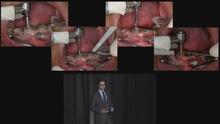-
0
Patient Assessment
- 0.1 Patient demand
- 0.2 Overarching considerations
- 0.3 Local history
- 0.4 Anatomical location
- 0.5 General patient history
-
0.6
Risk assessment & special high risk categories
- 5.1 Risk assessment & special high risk categories
- 5.2 age
- 5.3 Compliance
- 5.4 Smoking
- 5.5 Drug abuse
- 5.6 Recreational drugs and alcohol abuse
- 5.7 Parafunctions
- 5.8 Diabetes
- 5.9 Osteoporosis
- 5.10 Coagulation disorders and anticoagulant therapy
- 5.11 Steroids
- 5.12 Bisphosphonates
- 5.13 BRONJ / ARONJ
- 5.14 Radiotherapy
- 5.15 Risk factors
-
1
Diagnostics
-
1.1
Clinical Assessment
- 0.1 Lip line
- 0.2 Mouth opening
- 0.3 Vertical dimension
- 0.4 Maxillo-mandibular relationship
- 0.5 TMD
- 0.6 Existing prosthesis
- 0.7 Muco-gingival junction
- 0.8 Hyposalivation and Xerostomia
- 1.2 Clinical findings
-
1.3
Clinical diagnostic assessments
- 2.1 Microbiology
- 2.2 Salivary output
-
1.4
Diagnostic imaging
- 3.1 Imaging overview
- 3.2 Intraoral radiographs
- 3.3 Panoramic
- 3.4 CBCT
- 3.5 CT
- 1.5 Diagnostic prosthodontic guides
-
1.1
Clinical Assessment
-
2
Treatment Options
- 2.1 Mucosally-supported
-
2.2
Implant-retained/supported, general
- 1.1 Prosthodontic options overview
- 1.2 Number of implants maxilla and mandible
- 1.3 Time to function
- 1.4 Submerged or non-submerged
- 1.5 Soft tissue management
- 1.6 Hard tissue management, mandible
- 1.7 Hard tissue management, maxilla
- 1.8 Need for grafting
- 1.9 Healed vs fresh extraction socket
- 1.10 Digital treatment planning protocols
- 2.3 Implant prosthetics - removable
-
2.4
Implant prosthetics - fixed
- 2.5 Comprehensive treatment concepts
-
3
Treatment Procedures
-
3.1
Surgical
-
3.2
Removable prosthetics
-
3.3
Fixed prosthetics
-
3.1
Surgical
- 4 Aftercare
数字化治疗方案设计 - NobelClinician
Key points
- 数字化流程可提高治疗程序和效果的可预测性
- NobelClinician™ 可优化与治疗团队和患者的沟通
- 治疗方案数据用于制作引导手术的手术模板
一般注意事项
NobelClinician™ 软件解决方案是一种适用于诊断、治疗方案设计和患者沟通的数字化工具。软件中集成了患者扫描以便识别、映射和诊断解剖结构。在末端齿系情况下,可以虚拟地拔除剩余的牙齿并在设计中整合拔牙部位。根据这一评估,同时考虑到手术和修复要求,可以以数字化方式设计最佳种植体位置。该数据可用于制作引导手术模板。
与治疗团队和患者沟通
NobelClinician™ 沟通工具可帮助向患者介绍、说明和讨论设计的治疗方案并帮助提高患者对治疗的了解和接受度。
在设计阶段,可以使用 NobelClinician™ 数字化工具与治疗团队、转诊患者和技工室进行沟通。
数字化工作流程 - 主要步骤
1 临床诊断与治疗接受度
借助于 CBCT 或 CT 扫描、口腔内诊断和临床照片进行患者评估。与患者讨论和治疗接受度。
2 对修复信息进行数字化
精确模型扫描(包括软组织信息和技工室提供的诊断性牙齿结构)可帮助得到最佳治疗方案设计。
3 通过团队沟通进行治疗方案设计
利用可用的数字化信息,制定治疗方案并与治疗合作伙伴和外部专业人员(如果需要)分享。
4 手术模板的制作
如果为了实现精确的种植体植入而使用了引导种植体植入方案,则也使用治疗方案数据来制作手术模板。
5 种植体植入(引导/非引导)
使用引导手术方案时,可以在引导先锋钻牙或完全引导方法(包括种植体植入)之间进行选择。
6 修复设计和修复体放置
使用 NobelClinician™ 完成数字化工作流程后,接下来进行修复体的 NobelProcera™ CAD/CAM 制作,此步骤可实现设计灵活性、高精度、被动贴合、高材料质量和更短的技工室处理时间。
使用 NobelClinician™ 数字化工作流程的治疗示例
1 按照即刻负重治疗方案进行全口修复
患者表现出对现有修复体进行“额外支撑”的意愿,尤其是在需要拔除其下颌前部的最后一颗牙齿之后。他的修复体已经显示出多种磨损和修复迹象。因此,修复体必须进行更换,并在种植体植入后无法再使用。
<span itemprop="name" content="TG_casemov__to_2393_case1"></span> <span itemprop="description" content=""></span> <span itemprop="duration" content="187"></span> <span itemprop="thumbnail" content="http://cdnbakmi.kaltura.com/p/1320171/sp/132017100/thumbnail/entry_id/1_sta21lb1/version/100000/acv/181"></span> <span itemprop="width" content="560"></span> <span itemprop="height" content="395"></span>
2 上颌全口缺失/齿系缺损的修复
此患者提出对第 15、21、22 和 24 号牙齿使用套筒式修复体。由于两颗剩余牙齿的预后不良并且需要拔除其他两颗牙齿,因此必须为上颌的修复康复选择一种新的治疗方法。患者佩戴活动义齿多年,已经对其感到舒适,因此再次选择了新的活动修复体。另外,该患者的财务状况不允许在后牙区进行任何再生程序(窦底提升),否则将可以为种植体牙桥植入 8 个种植体。针对患者的预期及其财务状况,选择了拔除所有剩余的牙齿并在窦间区域植入 6 个种植体。
医疗状况:变应性肉芽肿性血管炎 (CSS)、哮喘
<span itemprop="name" content="TG_casemov__to_2393_case2"></span> <span itemprop="description" content=""></span> <span itemprop="duration" content="211"></span> <span itemprop="thumbnail" content="http://cdnbakmi.kaltura.com/p/1320171/sp/132017100/thumbnail/entry_id/1_9eo8nqa5/version/100000/acv/181"></span> <span itemprop="width" content="560"></span> <span itemprop="height" content="395"></span>






